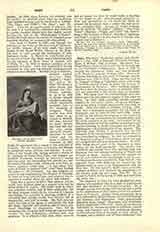

Cano, MELCHIOR, Dominican bishop and theologian, b. January 1, 1509, at Tarancon, Province of Cuenca, Spain; d. September 30, 1560, at Toledo. His father, Ferdinand Cano, a learned jurist, sent him at an early age to the University of Salamanca. There in 1523 he entered the Dominican Order, and was professed at St. Stephen’s convent, August 12, 1524. Francis de Victoria, who held the first chair of theology, was his professor from 1527 to 1531. Cano was then sent to St. Gregory’s College at Valladolid, where, with Louis of Granada among others, he heard the lectures of Bartholomew of Carranza. After teaching philosophy for a time he became master of students, 1534, and was promoted to the second chair of theology, 1536. The same year the baccalaureate was conferred upon him by a general chapter of the order at Rome. In 1542, while attending another general chapter, he was made master of sacred theology, and on his return to Spain obtained the first chair at Alcala. After the death of Victoria, August 17, 1546, Cano was a successful competitor for his chair, at Salamanca, and he held the title until 1552. Early in 1551 he was sent by the emperor to the Council of Trent. He was accompanied by Dominic Soto, and, like other members of the order, was enabled by his historical erudition and his mastery of scholastic and positive theology to render important service in the deliberations and achievements of the council. The following year Charles V presented him for the bishopric of the Canary Islands; but a month after he was preconized he resigned. In 1553 he returned to St. Gregory’s College at Valladolid as rector, but was not charged with active professorial duties. In 1557, after being elected prior of St. Stephen’s at Salamanca, he was made provincial. This election was contested, and among those who opposed Cano was Carranza, who had become Archbishop of Toledo and Primate of Spain. Another provincial chapter renewed and confirmed the proceedings of the former, but the reelection was annulled by Pope Paul IV, who regarded Cano with disfavor for supporting the Spanish Court in some of its disagreements with the Holy See. On this pontiff’s death Cano personally repaired to Rome, and obtained the approbation of his election from the new pope, Pius IV. He returned to Toledo in the spring of 1560, and died there the same year.
The character of Cano has been assailed by some writers, who represent him as a man of immoderate zeal and sometimes of intemperate action. He is charged among other things with having been a party to the misfortunes of Don Carlos and to the persecutions of Carranza. Against these accusations he is ably defended by Father Touron, the learned Dominican historian and biographer. Cano undoubtedly displayed great energy, vehemence, and determination in the pursuit of his aims. Early in his career at Valladolid he became involved in scholastic controversy with Carranza, and their continuous disputes, besides placing them at the head of rival schools of thought, cast a shadow over all their subsequent relations. Cano is also said to have for some time defeated the wish of the Jesuits to establish themselves in Salamanca. His strictures, which made a great stir, were published about the time of the suppression of the Society, but were withdrawn from publication in 1777. They were republished in “Crisis de la Compania de Jesus” (Barcelona, 1900), 152-159. Cano’s advice in important affairs of Church and State was often sought. Though possessing the full confidence of Philip II, he declined in 1554 the position of confessor to the king.
In whatever light his personal traits may appear, Cano made an imperishable name for himself in his work, “De Locis Theologicis” (Salamanca, 1563), which in classic elegance and purity of style a proaches the great didactic treatises of Aristotle Cicero, and Quintillion. It certainly ranks with the most lauded productions of the Renaissance, not only on account of its fluency and freedom, but also for its lucid judgment and profound erudition. In the estimation of some critics this work, marking a new epoch in the history of theology, has made its author worthy of a place next to St. Thomas Aquinas. The “De Locis” was the outcome of a movement inaugurated by Francis de Victoria to restore the best patristic learning and to give to theological science a purer diction and an improved literary form. Cano took up the work of his master, and after years of labor gave out the production that was worthy of their united aspirations and endeavors. It was Cano’s idea to establish scientifically the foundations of theological science, and therefore the “De Locis” is a treatise on theological method. After elucidating the distinction between arguments based on authority and arguments from reason, the author enumerates ten loci, or sources of theology, each the subject of a book. With admirable precision and clearness he treats successively the authority of Holy Writ, oral tradition, the Catholic Church, the Councils, the Fathers, the Roman Church, the Scholastic theologians, the value of natural reason as manifested in science, the authority of philosophers, and the authority of history. The twelfth and last book treats of the use and application of these loci, or sources, in scholastic debate or theological polemics. Two further books on the loci as applicable to Scriptural exposition and as employed against various classes of adversaries of the Catholic Church were contemplated by Cano, but he was overtaken by death before he completed his work. A standard quarto edition of the “De Locis Theologicis” (Padua, 1714) was edited by Hyacinth Serry, with a “Prologus Galeatus” defending Cano against his critics. This is followed by most of the subsequent editions, some twenty in all. Two other treatises, “De Sacramentis” and “De Poenitentia”, are not so well known, but they show the same character of solidity and clearness of method, and the same elegant Latinity.
JOHN R. VOLZ

